Pilot Felix Baumgartner of Austria jumps out of the capsule during the final manned flight for Red Bull Stratos in Roswell, New Mexico, USA on October 14, 2012. Credit: Red Bull Stratos.
Daredevil Felix Baumgartner broke the sound barrier today during a skydive from the stratosphere, from approximately 38.5 km (128,000 ft, 24.24 miles) above the Earth’s surface. Baumgartner reached Mach 1.24 or 1,342 km/h (833.9 miles per hour), going faster than the speed of sound. Here is a gallery of official images and video from Red Bull Stratos. You can find out more in our full article which provides all the details.
The crane that holds the capsule as the balloon ascends. Credit: Red Bull Stratos.
The crane follows the balloon with the capsule at the flight line during the launch of Baumgartner’s flight. Credit: Red Bull Stratos.
Baumgartner seen on a screen at mission control center while he is still inside the capsule, while he talks to Joe Kittinger (back of his head is visible). Kittinger previously held the record for longest and fastest freefall before Baumgartner’s jump today. Credit: Red Bull Stratos.
Screens at the mission control shows Felix Baumgartner of Austria as he jumps from the capsule. Credit: Red Bull Stratos.
The view from a camera inside the capsule as Baumgartner jumps. Credit: Red Bull Stratos.
Baumgartner moves from his seat to the ledge outside the capsule. Credit: Red Bull Stratos.
Baumgartner floats down to Earth on a parachute. Credit: Red Bull Stratos.
Just before Baumgartner lands. Credit: Red Bull Stratos.
Baumgartner lands on his feet and celebrates. Credit: Red Bull Stratos.
Baumgartner falls to his knees after landing successfully. Credit Red Bull Stratos.
Felix Baumgartner celebrates after successfully completing his record-breaking jump. Credit: Red Bull Stratos.
Baumgartner after his successful jump. Credit: Red Bull Stratos.
Baumgartner and Technical Project Director Art Thompson celebrate together after the successful jump. Credit: Red Bull Stratos.
Baumgartner with members of his family following the successful jump. Credit: Red Bull Stratos.
Baumgartner, Kittinger and the Red Bull Stratos team at a press conference following the jump. Credit: Red Bull

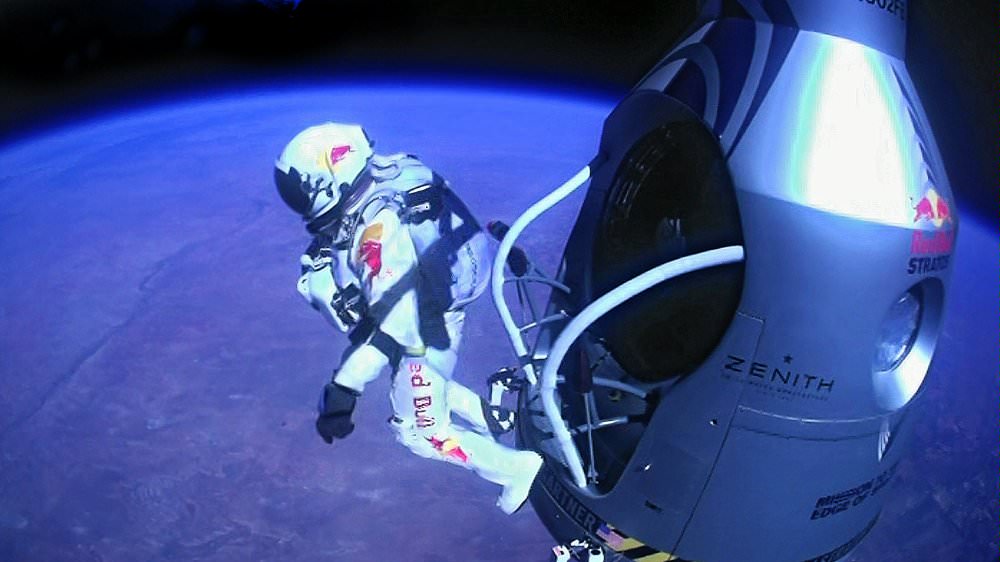
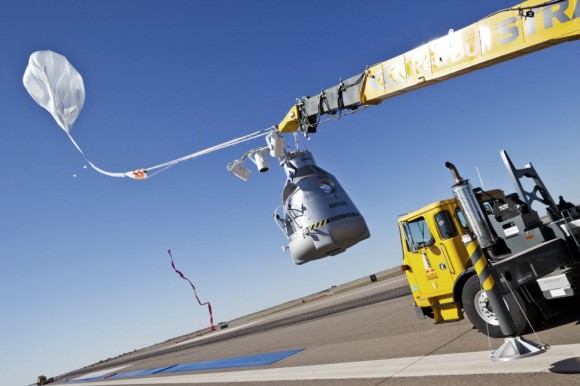
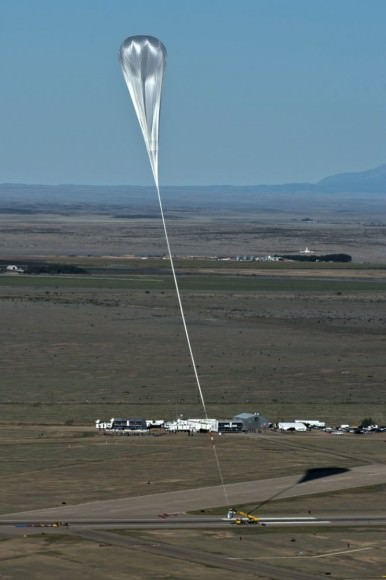
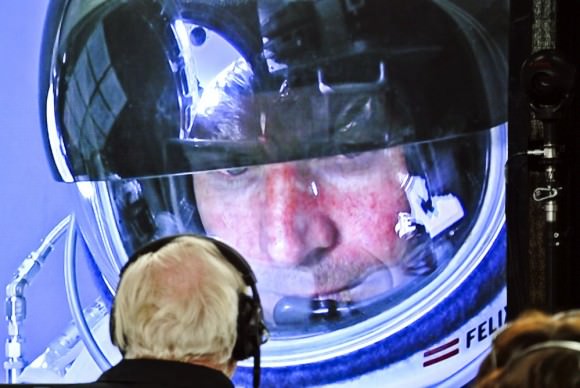
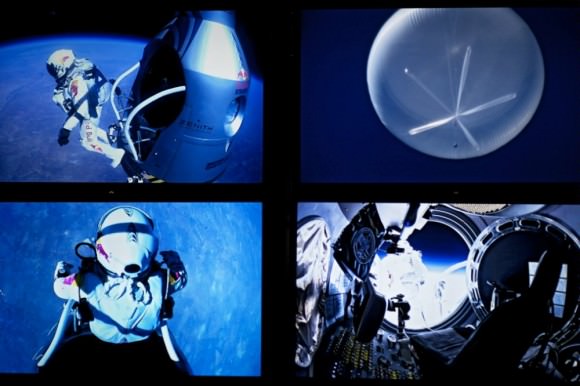
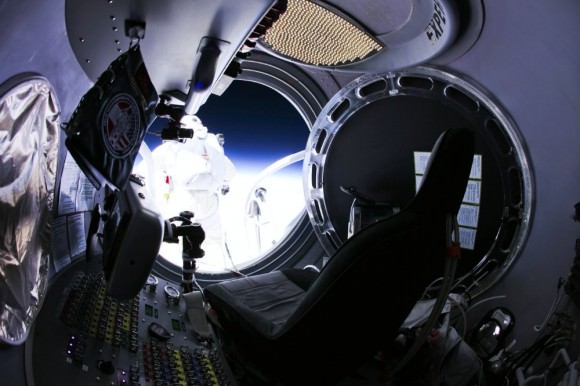
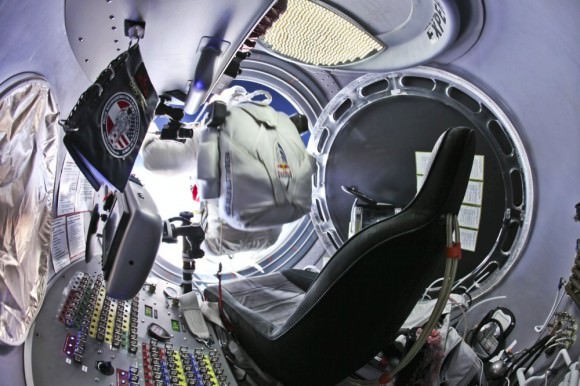
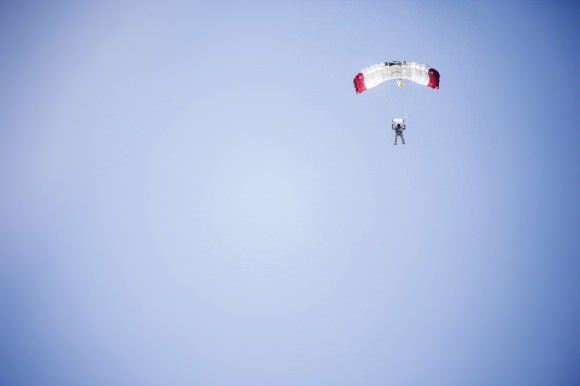
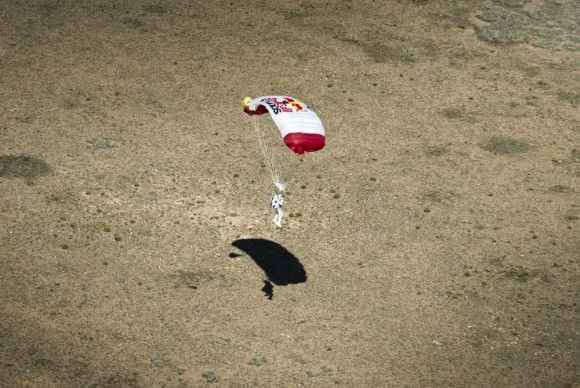
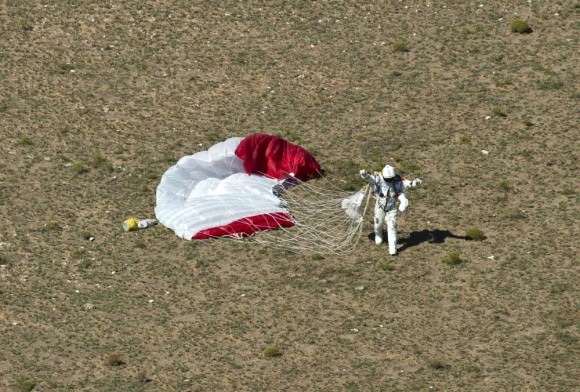
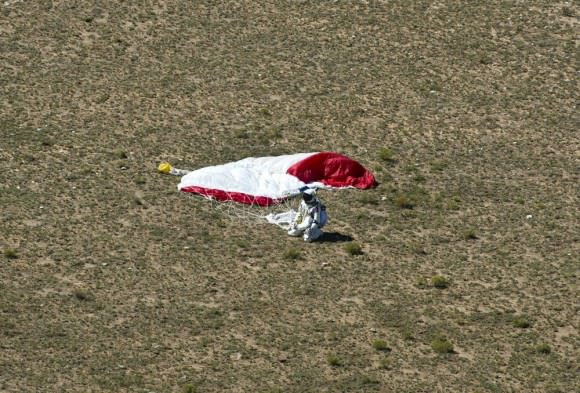
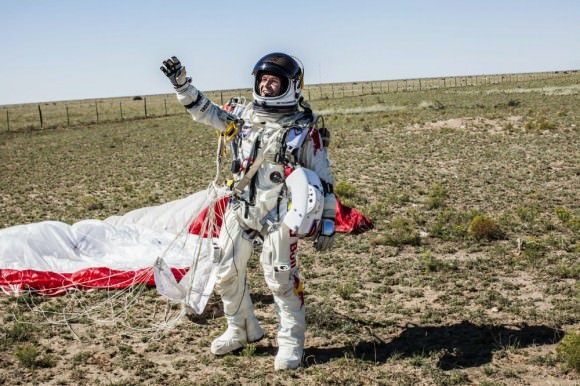
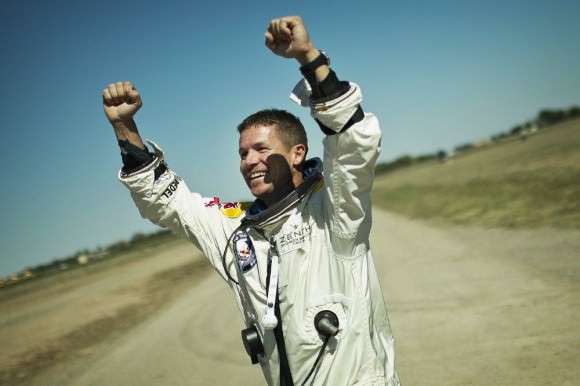
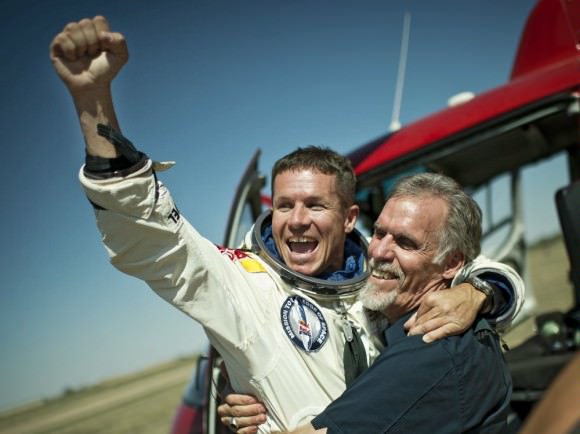
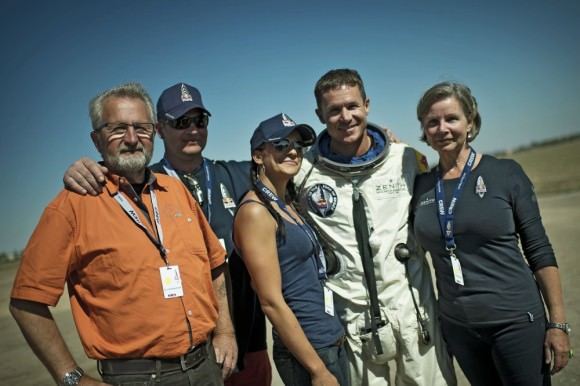
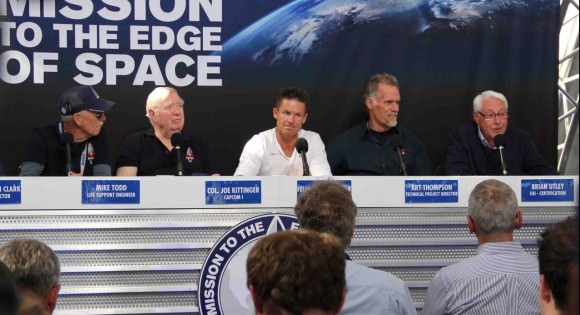
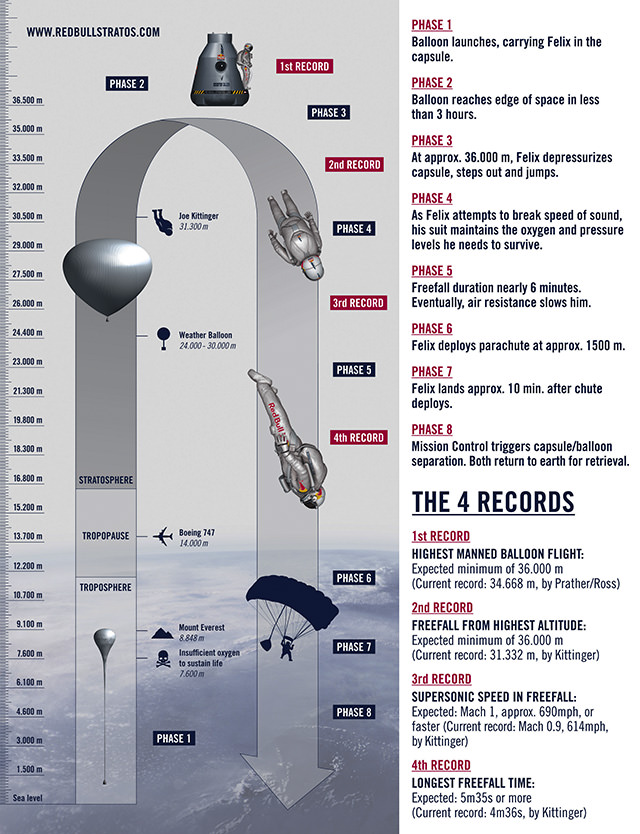
It was good decision to delay jump on Sunday,..to prevent too quick rotation during first part of fly,..
This is why we need man space flight. 7m watched it online. You’ll never get that for a rover. Inspiration
how many watched it on TV? I suspect more than 7m
I watched it on TV and it was a comprehensive live broadcast much better than the internet!
assinine.
Felix sounded a little ‘spacey’ there for a while.. When the mission control commentator asked him several questions, he seemed to have been slow on the RSVP. Maxed out, anticipation wise? Quite a thrill… facing possible death. Then the rush! Wowie!
He was most likely unconscious as he hit supersonic speeds, he was in a freefall spinning for over a minute before he levelled out. I suspect he was out during that time.
With the low air pressure he didn’t even feel supersonic speed. He is a very expierienced skydiver but didn’t have the air to control his fall until reaching a low enough altitude.
Waste of time – it was just another publicity stunt to sell more Taurine laden energy sodas. Let’s build a carbon nanotube space elevator so he can do the longest bungee jump next. GO MERICA!
You didn’t have to watch, Bill. I wouldn’t drink red bull if you paid me and I don’t think this will persuade many to start drinking it. I appreciate the efforts they put into this achievement/stunt. Felix got young people thinking about physics and what’s possible outside of their everyday lives – and that’s a positive thing…
Just how thin is the air at the height he jumped from? The speed of sound should be faster in thinner air. Did he break the speed of sound for the height he was at or did he break the speed of sound at sea level or both?
Without air there is not any sound waves possible. Thinner air would result in a loss of sound. The speed of sound is different at different air pressures; However, there is a set standard speed of sound probably quoted from sea level. If you ever get the chance to be by a large steel plate don’t miss the oportunity to slam it with a large hammer. You will be rewarded with a large sonic boom as the sound waves will break the sound barrier!
But there is air at that altitude. If not, the balloon would not have been able to lift him that high. The air is thinner but not gone, so sound is still possible and the speed of sound there would be higher, but I don’t know how high. I know speed of sound is affected by temperature, pressure and humidity, but I don’t know the conditions at 39km high. I’m not asking to be a nit picker. If he reached the speed of sound at sea level, but not the speed of sound in the conditions he was in, then he wouldn’t have created a sonic boom. I’m wondering if the air resistance at that altitude would or would not allow him to exceed the speed of sound in the local conditions with just free fall.
Bax: Actually, the speed of sound INcreases with pressure, so “Mach one” is slower at higher altitudes. For an extreme example, sound travels about five times faster in water than air. The article says he reached 833.9 miles per hour (an absolute measure of velocity not relative to air pressure). That’s faster than the speed of sound at sea level (~768 mph), so at altitude he had an even higher Mach number.
Tim A: If you hit a steel plate with a hammer (or anything with anything), the sound waves will not “break the sound barrier”- they are going at exactly the speed of sound. But yes, you might be completely deafened, which may have been your point :-).